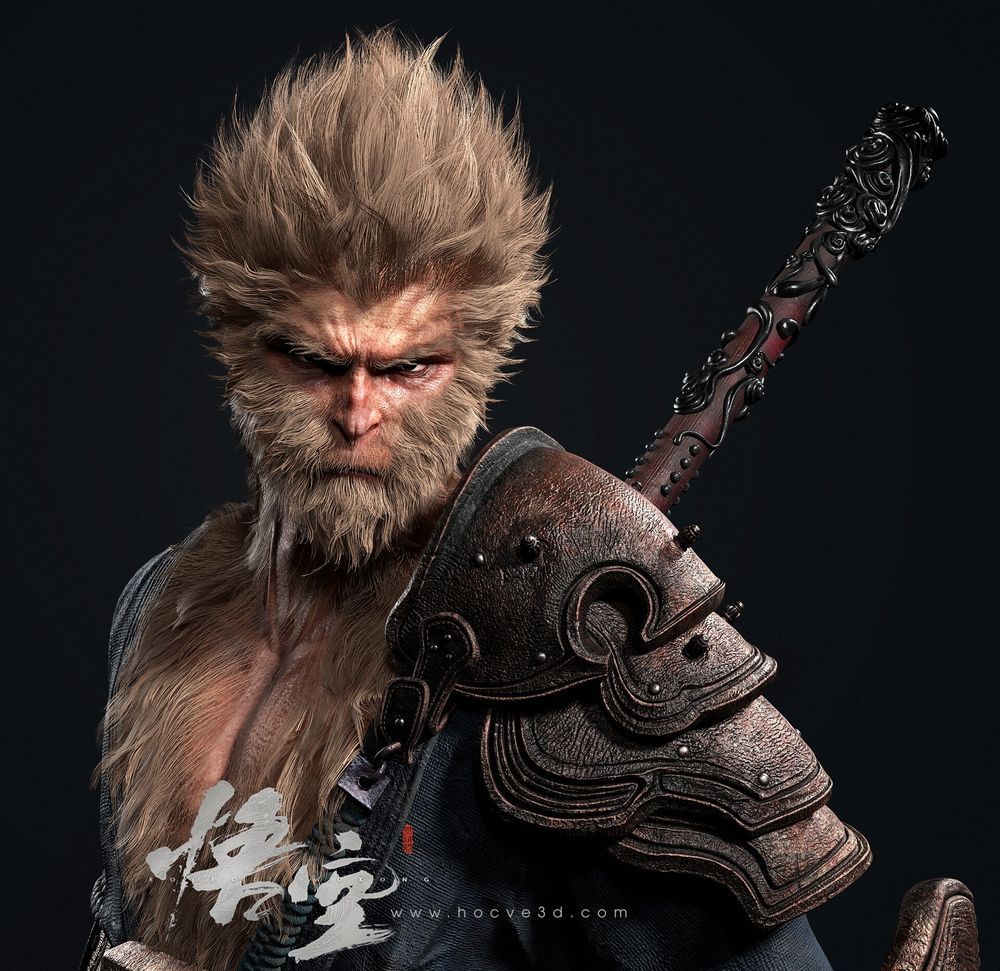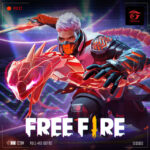
Black Myth: Wukong
All trademarks belong to their respective owners.Popular Now
 Toca Boca World
Toca Boca World
 Call of Duty
Call of Duty
 Free Fire
Free Fire
 Roblox
Roblox
 Candy Crush Saga
Candy Crush Saga
 Poppy Playtime
Poppy Playtime
 PUBG Mobile
PUBG Mobile
 Minecraft
Minecraft
 Fall Guys
Fall Guys
 EA SPORT FC 25
EA SPORT FC 25
The Art of the Yaoguai: Black Myth: Wukong’s Astonishing Creature Design and Mythology
In the fantastical world of Black Myth: Wukong, the formidable adversaries are not merely generic monsters; they are the terrifying and often tragic manifestations of Yaoguai – demons, spirits, and transformed beasts from Chinese mythology. Game Science has demonstrated an extraordinary commitment to artistic vision and detail in bringing these mythical beings to life, drawing directly from the vivid descriptions of Journey to the West. Each creature design is a testament to painstaking research, creative reimagination, and the cutting-edge capabilities of Unreal Engine 5, resulting in a rogue’s gallery that is both visually stunning and deeply resonant with ancient folklore. This isn’t just about designing challenging boss battles; it’s about honoring a rich cultural heritage and crafting enemies that are as compelling in their lore as they are demanding in combat, making Black Myth: Wukong a truly unique action RPG.
Rooted in Legend: The Essence of Yaoguai
To fully appreciate the creature design in Black Myth: Wukong, one must understand the concept of Yaoguai in Chinese mythology.
- Demons and Spirits: Yaoguai are supernatural beings, often animals or plants that have gained spiritual cultivation and transformed into human-like or monstrous forms. They are generally antagonists in Journey to the West, often seeking to consume the Tang Monk’s flesh to gain immortality or simply causing mischief and chaos.
- Distinct Personalities and Motives: Unlike simple monsters, Yaoguai often have complex personalities, backstories, and specific magical abilities. They are not mindless; many possess cunning, pride, and their own motivations, making them more than just obstacles for Sun Wukong and his companions.
- Reflecting Human Flaws: In the original novel, many Yaoguai symbolize human vices or weaknesses, providing allegorical depth to the narrative. Black Myth: Wukong seems to lean into this, hinting at deeper stories behind its enemies.
A Gallery of Horrors and Wonders: Design Highlights
Trailers and gameplay showcases have revealed a diverse and visually striking array of Yaoguai, each meticulously designed.
- The Macaque: One of the most prominent early adversaries, this ape-like demon with piercing red eyes immediately conveys power and menace. Its design is both familiar (as an ape) yet twisted with demonic features, setting a tone for the game’s creature aesthetic. Its combat style, agile and aggressive, perfectly matches its appearance.
- Kang-Jin Loong: A dragon-like entity, this boss showcases the game’s ability to render grand, multi-limbed creatures with incredibly detailed scales, glowing eyes, and powerful magical effects. Such designs demonstrate the scale of the threats Wukong will face.
- The Six-Eared Macaque: A particularly intriguing and highly anticipated character from the novel, the Six-Eared Macaque is Wukong’s doppelganger, possessing similar powers and challenging Wukong’s very identity. His presence in the game suggests a deep dive into the internal and external conflicts of the Monkey King, with his design likely mirroring Wukong’s own, but with subtle, unsettling differences.
- Yellowbrow (Lesser Thunder Monastery Imposter): This character from the novel famously impersonated Maitreya Buddha. His game design is expected to capture his deceptive nature and the powerful magical artifacts he wields, embodying cunning and dangerous trickery.
- Spider Demons and Insectoid Creatures: The trailers have shown terrifying insect-like foes and multi-limbed spider demons, suggesting encounters that tap into primal fears. Their grotesque yet detailed designs are a testament to the game’s commitment to varied and imaginative enemy types.
- Otherworldly Entities: Some creatures appear to be less animalistic and more elemental or spiritual, hinting at the vastness of the Journey to the West universe and the diverse threats that exist within the Heavenly, Human, and Underworlds.
Artistic Vision Meets Technical Execution
Game Science’s approach to creature design marries artistic brilliance with cutting-edge technology.
- Unreal Engine 5 Detail: The use of Nanite allows for an incredible polygon count on character and enemy models, meaning every scale, hair, and armor piece is rendered with exquisite detail, contributing to the creatures’ believability and menacing presence.
- Realistic Textures and Materials: The game applies highly realistic textures and material shaders to the creatures, making their skin look leathery, their fur coarse, and their armor metallic. This attention to material rendering adds significantly to the visual impact.
- Expressive Animation: The creatures are brought to life through fluid and impactful animations, whether it’s the graceful movements of a dragon, the predatory slink of a beast, or the devastating impact of a demon’s attack. This dynamic animation is crucial for boss battles, allowing players to read attack patterns.
- Sound Design: The auditory aspect plays a key role in making these creatures terrifying and memorable. The roars, growls, and unique sounds associated with each Yaoguai contribute significantly to their presence and the overall immersive experience.
Beyond Combat: Storytelling Through Design
The Yaoguai in Black Myth: Wukong are not just challenges; they are integral to the game’s narrative and world-building.
- Lore Integration: Each demon likely has a story woven into the fabric of the game, referencing their origins in Journey to the West or revealing new facets of their existence. Defeating them might unlock deeper insights into the game’s unique take on the epic.
- Environmental Context: The types of demons encountered often reflect the environments they inhabit, from icy peaks to ancient ruins, further immersing players in a cohesive, living world.
- Variety and Scale: The sheer variety in size, shape, and combat style of the Yaoguai promises a diverse range of boss fights and enemy encounters, ensuring that the combat remains fresh and challenging throughout the game.
The creature design in Black Myth: Wukong is a standout feature, promising a visually spectacular and deeply engaging experience that honors the rich tapestry of Chinese mythology. By bringing the terrifying yet captivating Yaoguai of Journey to the West to life with unparalleled detail and artistic flair, Game Science is not only crafting challenging adversaries for the Monkey King but also enriching the game’s narrative and cultural depth. Every encounter with these mythical beings will be a testament to both the game’s technical brilliance and its profound respect for ancient folklore.
Which Yaoguai from the Journey to the West novel are you most excited to see brought to life in Black Myth: Wukong?
Rating
PROS
- Stunning Visuals: The game features high-quality graphics and a unique art style that brings the mythical world to life, showcasing detailed character models and breathtaking environments.
- Innovative Combat System: Players can experience dynamic and fluid combat, utilizing a variety of melee and magical abilities. The Monkey King’s transformation mechanics and diverse weapon options add depth to battles.
- Expansive Open World: The game offers a vast, richly detailed open world with diverse biomes, dynamic weather, and a day-night cycle, encouraging thorough exploration and interaction.
- Engaging Storytelling: Black Myth: Wukong provides a fresh take on the classic Chinese myth of the Monkey King, featuring well-crafted cinematic cutscenes, professional voice acting, and immersive environmental storytelling.
CONS
- Difficulty Curve: Some players find the game’s difficulty curve to be uneven, with certain sections being disproportionately challenging compared to others.
- Limited Variety in Enemy Design: The variety of enemies may feel limited, with some encountering repetitive designs or tactics that could diminish the sense of challenge over time.
- Optimization Concerns: While the game is designed to run on various hardware configurations, there are still optimization concerns that may affect performance on lower-end systems.
